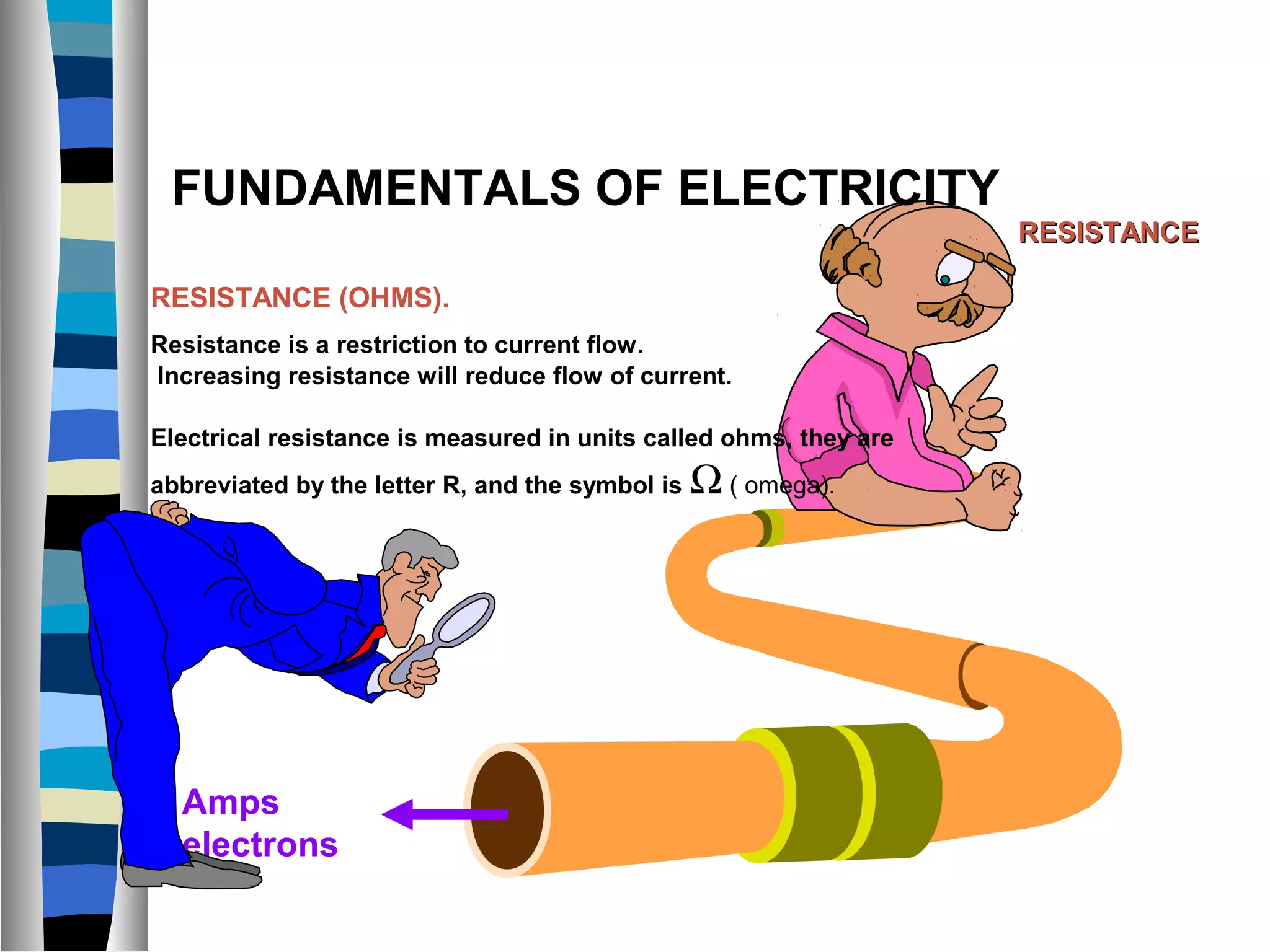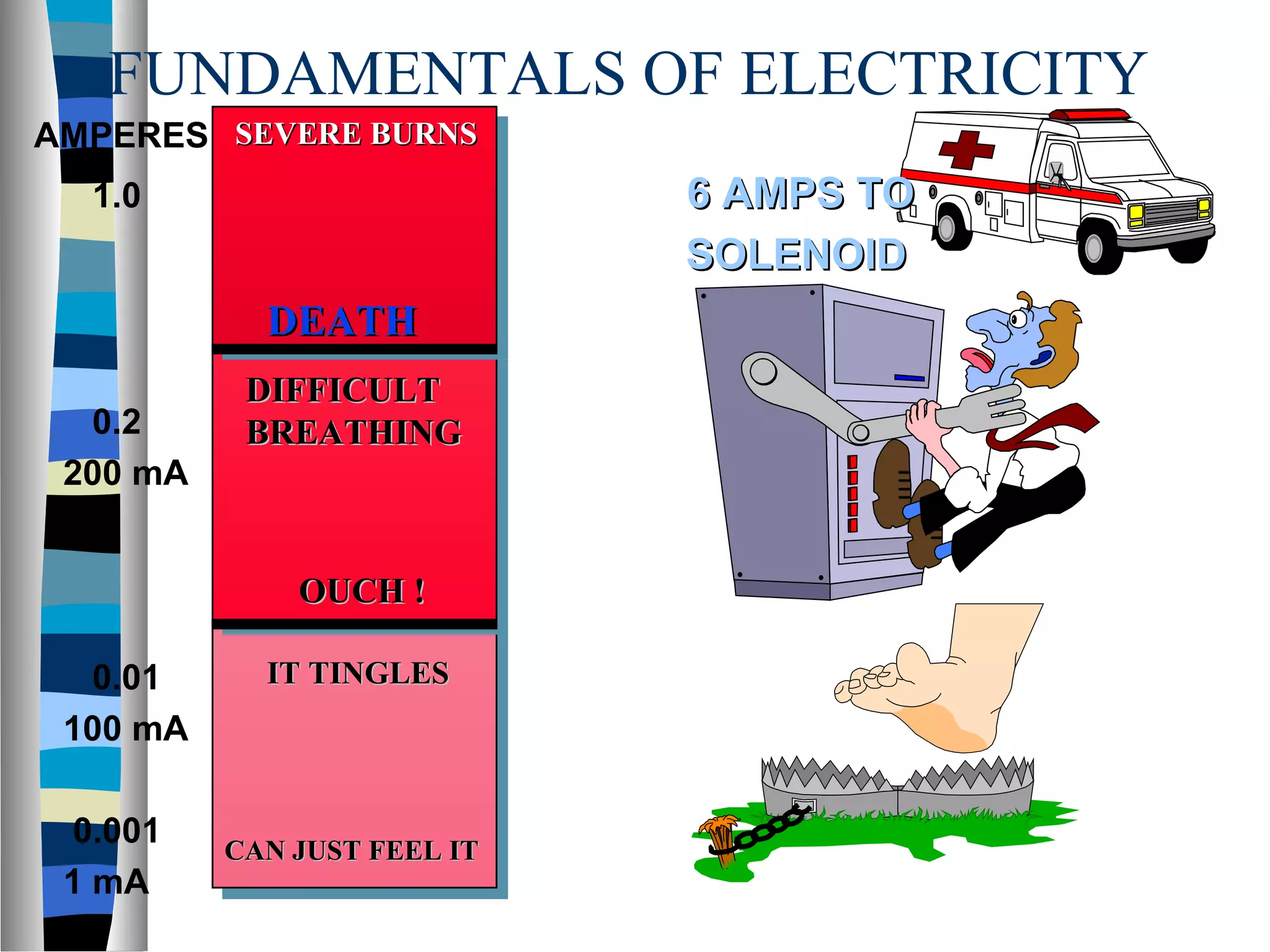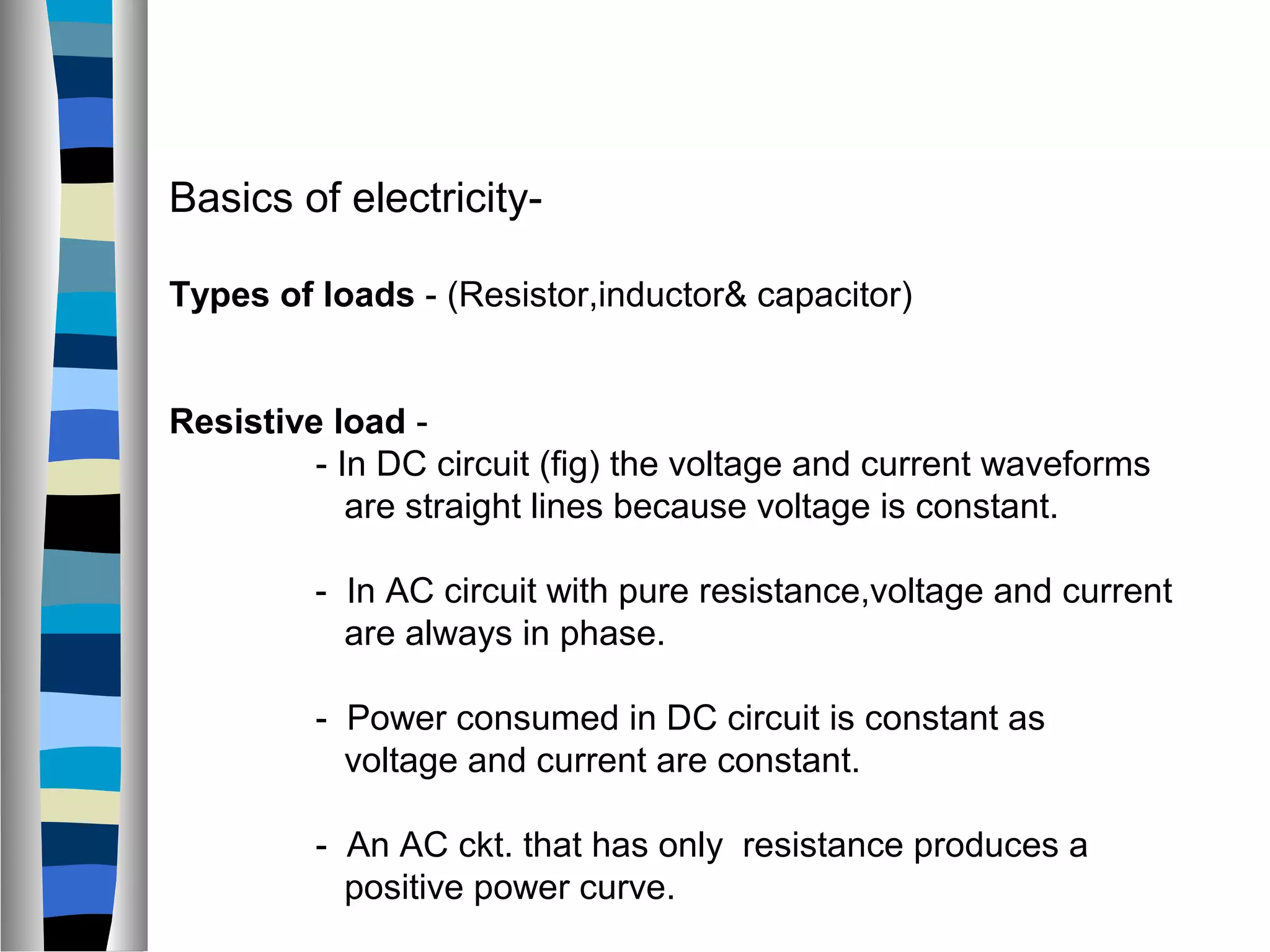This document provides an introduction and overview of basic electricity concepts. It begins by outlining the objectives of electricity training, which include understanding Ohm's law and the relationship between voltage, current and resistance. It then defines key terms like voltage, current, resistance, capacitors and inductors. The document explains concepts such as conventional current flow, electron flow, and the differences between series and parallel circuits. It also introduces Ohm's law and how to calculate power in DC and AC circuits.







































